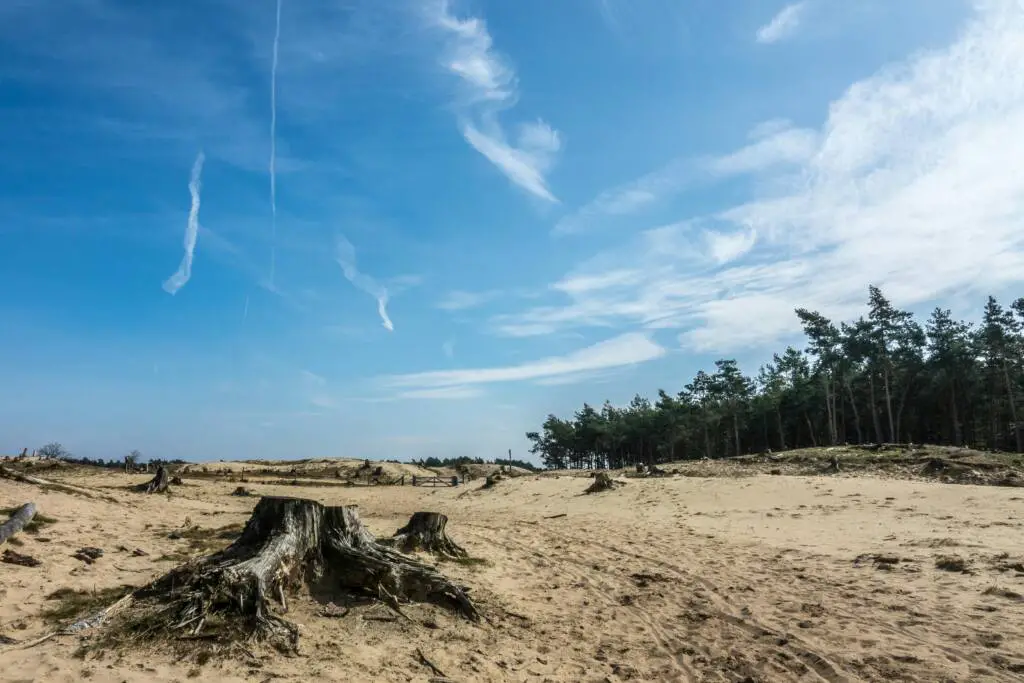The Effects of Deforestation

Deforestation is a pressing issue that demands our attention. It is the drastic and intentional removal of trees and vegetation from forests, leading to the conversion of forested areas into non-forest land. This article aims to provide a comprehensive understanding of the effects of deforestation, its far-ranging impacts, and the various solutions to address this critical problem.
What is Deforestation?
Deforestation is the process of clearing or destroying forests, whether completely or partially, for various purposes such as agriculture, logging, infrastructure development, and mining. This often involves cutting down trees, burning the land, and replacing the forest ecosystem with commercial activities. It is estimated that about 18 million acres of forest, an area equal to the size of Panama, are lost each year due to deforestation.
Key Takeaways:
Deforestation is the intentional removal of trees and vegetation from forests.
It involves clearing land for agriculture, logging, infrastructure development, and mining.
Approximately 18 million acres of forest are lost annually due to deforestation.
The Effects of Deforestation
Deforestation has profound environmental, economic, and social consequences.
Let’s examine each aspect in detail:
Environmental Consequences:
Deforestation significantly impacts the environment and contributes to climate change. Forests act as carbon sinks, absorbing carbon dioxide and releasing oxygen. When trees are cut down, the carbon stored within them is released into the atmosphere, exacerbating the greenhouse effect and global warming. Deforestation also leads to the loss of biodiversity, disrupting ecosystems and endangering countless plant and animal species.
Economic Implications:
Deforestation has economic repercussions, both short-term and long-term. While it may generate immediate profits for industries engaged in agriculture, logging, and mining, the long-term consequences often outweigh the temporary gains. Loss of forests can result in soil erosion, reduced water quality, and impaired agricultural productivity. Moreover, deforestation can lead to the loss of ecotourism opportunities, which provide sustainable income for local communities.
Social Impact:
Deforestation affects local communities, especially indigenous populations who rely on forests for their livelihoods and cultural practices. When forests are destroyed, communities lose their source of food, clean water, and traditional medicines. Additionally, displacement often occurs as people are forced to leave their homes due to deforestation-related activities. The social impact of deforestation extends beyond immediate concerns to issues of poverty, inequality, and human rights abuses.
Causes of Deforestation
Understanding the causes of deforestation is crucial for developing effective solutions. The following are the primary drivers of deforestation:
Agriculture and Livestock Expansion:
Agriculture, particularly for the cultivation of crops like soybeans, palm oil, and cattle ranching, is a leading cause of deforestation. As global demand for food and animal products grows, forests are cleared to make way for farmland and pastures, resulting in the destruction of vast forest areas.
Logging and Timber Industries:
The logging industry, driven by the demand for timber and wood products, is another major contributor to deforestation. Forests are logged for commercial purposes, often through unsustainable practices that fail to replenish the cut-down trees. Illegal logging also poses a significant threat to forests, as it occurs without regulation or oversight.
Infrastructure Development:
As global populations continue to expand, the need for infrastructure development intensifies. Building roads, expanding cities, constructing dams, and establishing power plants often requires clearing large areas of forests. While infrastructure development is essential for societal progress, striking a balance between development and conservation is crucial.
Mining Activities:
Mining operations, including surface mining and underground mining, result in the destruction of extensive forested areas. Mines are typically established in remote and pristine regions, leading to the loss of valuable habitats and the pollution of surrounding ecosystems. Deforestation also occurs when mining companies clear forests to access mineral-rich regions.
The Importance of Combating Deforestation
Recognizing the importance of combating deforestation is essential for the well-being of our planet and future generations. Preserving forests is vital for climate regulation, biodiversity conservation, and the protection of indigenous peoples’ rights. Additionally, forests provide numerous ecosystem services, such as carbon sequestration, water regulation, and soil stability. By addressing deforestation, we can mitigate climate change, protect wildlife habitats, and ensure sustainable development.
Solutions for Preventing Deforestation
To address deforestation effectively, we must implement a range of solutions across various sectors. Initiatives aimed at sustainable agricultural practices, responsible logging, infrastructure conservation, and alternative income sources are key to combating deforestation.
Let’s delve into each solution:
Sustainable Agriculture and Livestock Practices:
Promoting sustainable agricultural practices, such as agroforestry and organic farming, can help reduce the need for extensive deforestation. Encouraging responsible land use and supporting farmers to adopt sustainable techniques can protect forests, enhance soil fertility, and safeguard biodiversity. Additionally, reducing meat consumption and supporting sustainable livestock production can alleviate pressure on forests for grazing land and feed crops.
Responsible Logging and Timber Management:
Implementing sustainable logging practices, including selective logging and reforestation efforts, can ensure the regeneration and long-term viability of forests. Certification systems, such as the Forest Stewardship Council (FSC) label, help consumers identify sustainably sourced wood products and support responsible logging practices. By demanding certified timber, individuals and industries can contribute to protecting forests.
Balancing Infrastructure Development with Conservation:
Prioritizing sustainable infrastructure development that minimizes forest loss is crucial. Governments and developers should conduct thorough environmental impact assessments and explore alternative routes or designs that avoid or minimize deforestation. Conservation planning should be integrated into infrastructure projects to safeguard critical habitats and natural resources.
Promoting Alternative Sources of Income:
One way to mitigate deforestation is by providing alternative sources of income for communities affected by forest loss. Supporting ecotourism initiatives, developing sustainable non-timber forest products, and promoting renewable energy projects can offer economic opportunities that do not rely on forest destruction. Empowering local communities economically is essential for sustainable development.
The Role of Governments, Organizations, and Individuals
Combating deforestation requires a collective effort from governments, organizations, and individuals.
Let’s explore the roles each entity can play:
Government Policies and Regulations:
Governments need to implement and enforce robust policies and regulations to prevent deforestation. This includes stringent land-use planning, protected area management, sustainable agriculture and forestry practices, and sanctions against illegal logging and land encroachment. Governments must prioritize conservation alongside economic development to achieve long-term sustainability.
Collaboration with Environmental Organizations:
Environmental organizations play a vital role in conservation efforts. Their expertise, grassroots initiatives, and advocacy can help raise awareness, promote sustainable practices, and support communities impacted by deforestation. Collaboration between governments, organizations, and local communities is essential to achieve effective and lasting change.
Consumer Choices and Awareness:
Individual consumers have the power to influence deforestation through their purchasing choices. By opting for sustainably sourced products, supporting eco-friendly brands, and reducing meat consumption, individuals can contribute to combating deforestation. Creating awareness through education campaigns and promoting responsible consumer behavior is crucial in driving demand for environmentally friendly alternatives.
Conclusion
Deforestation is a complex issue with far-reaching consequences. It threatens the environment, economies, and social fabric of our planet. Understanding the causes, effects, and potential solutions is paramount in addressing deforestation effectively. By adopting sustainable practices, supporting responsible industries, and fostering collaboration among governments, organizations, and individuals, we can combat deforestation and ensure the preservation of our invaluable forests for future generations.
https://7thavewellnessblog.com/?p=4750
https://www.epa.gov/
FAQs
Q: What is the impact of deforestation on forests?
A: Deforestation leads to the loss of forest cover, which threatens biodiversity and disrupts the water cycle.
Q: How does deforestation affect plants and animals?
A: Deforestation leads to habitat loss for plants and animals, increasing the risk of extinction for many species.
Q: What is the impact of deforestation on indigenous communities?
A: Deforestation threatens the livelihood and culture of indigenous communities that rely on forests for their way of life.
Q: How does deforestation impact the water cycle and soil erosion?
A: Deforestation disrupts the water cycle, leading to soil erosion and degradation, affecting the quality of land for agriculture.
Q: What are the devastating effects of deforestation on the climate?
A: Deforestation increases the risk of climate impact by releasing greenhouse gases into the atmosphere, contributing to global warming.








